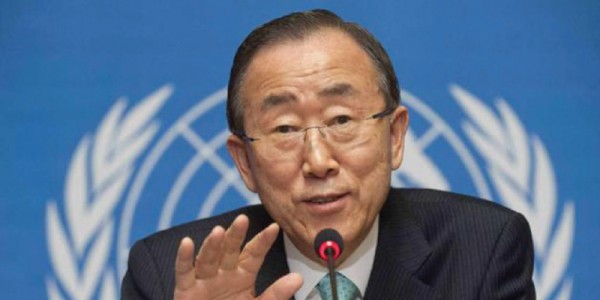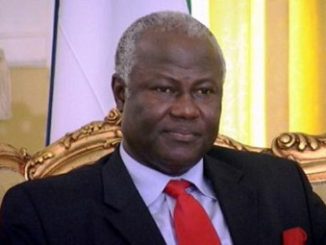
9 November 2014 – The world is on the “right track” to defeating Ebola as the infection rate of the deadly virus shows some signs of slowing in West Africa’s most affected areas, United Nations Secretary-General Ban Ki-moon declared today as he urged the international community to remain constant in fighting the disease until it is completely extinguished.
“The rate of new Ebola cases shows encouraging signs of slowing in some of the hardest-hit parts of Liberia, Guinea and Sierra Leone — and that’s good news. The full-scale international strategy to attack Ebola through safe burials, treatment facilities and community mobilization is paying dividends,” the Secretary-General confirmed in an op-edpublished in today’s The Washington Post.
“Governments and communities in the region are combating the virus. Dozens of countries have stepped up with life-saving contributions. The United Nations is also partnering closely with regional organizations such as the European Union and the African Union, which is mobilizing medical professionals and health-care volunteers from throughout the continent,” he added.
Amid recent signs of progress in containing the devastating outbreak, the UN system has been accelerating its Ebola response, including ramped up on-the-ground medical assistance for local governments in affected areas via the UN Mission for Ebola Emergency Response (UNMEER); providing financial support for the countries hardest hit by the socio-economic consequences of the disease through the World Bank; and monitoring the urgent laboratory testing of an experimental Ebola vaccine which, according to the World Health Organization (WHO), could be distributed across West Africa as early as January 2015.
While the UN’s ultimate goal is a complete reversal of infection rates and zero cases in all countries, the stated short-term target is captured by a UN-wide directive aimed at managing and treating 70 per cent of Ebola cases and making safe 70 per cent of burials by 1 December – a strategy, Mr. Ban said, which was the only way to break the exponential curve of infection.
Recent frontline reports from Guinea and Liberia, in fact, suggest significant decreases in infection rates across many affected areas, fuelling hopes that the target may be within reach. Anthony Banbury, the head of UNMEER, will brief the Security Council on 10 November providing Council members with a full update of the UN’s ongoing Ebola response.
Tempering initial enthusiasms, however, the Secretary-General warned against declaring “mission accomplished too soon,” noting that “as caseloads go down in some areas, they are rising in others.” In addition, he said, outbreaks had a tendency of flaring up again if a gap in the response left space for the disease to spread.
“The outbreak remains active,” he continued. ‘People are dying every day. New infections continue. And no one can say with certainty what the coming weeks might bring.”
Mr. Ban admitted that the Ebola outbreak had left global responders with “no time to lose,” and that the crisis had evolved into a complex public health emergency with “profound social, economic, humanitarian, political and security dimensions.”
As a result, he urged international stakeholders to remain vigilant and intensify their responses while also keeping an eye on the underlying causes of the epidemic, most notably by strengthening the region’s health systems.
“Ebola will be beaten through a resolute and coordinated effort. We have initial evidence to prove that this can happen. But we must speed up efforts to first get the crisis under control and then bring it to an end,” concluded the Secretary-General.
“Now is no time to let down our guard. We must keep fighting the fire until the last ember is out.”
UN INFORMATION DEPARTMENT



Leave a Reply